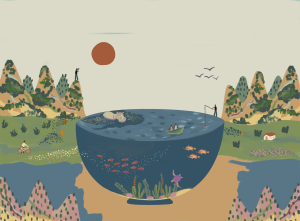- SIWI – Leading expert in water governance
- /
- Latest
- /
- Rita Colwell: “Expect unpleasant surprises”
Rita Colwell: “Expect unpleasant surprises”
Humanity may be in for some unpleasant health surprises incoming years, warns Rita Colwell, world-leading expert on waterborne diseases. Increasing waste from a growing population at a time of rising temperatures is great news for many bacteria, but less so for humans. In this interview, Dr Colwell talks about the risk for massive outbreaks of, for example, water borne diseases and what she sees as the best solution – clean water and sanitation.

This article was originally published in WaterFront #3-4 2018.
Read the full issue here >>
When Rita Colwell became the Stockholm Water Prize laureate in 2010, it was in recognition of her contributions to the understanding of waterborne infectious diseases. As a microbiologist, she was the first to discover that cholera can lie dormant in waterbodies. She then moved on to propose groundbreaking and low-cost solutions that have saved numerous lives, which was emphasized in the Prize citation.
The Distinguished Professor from the University of Maryland and Johns Hopkins University Bloomberg School of Public Health in the United States was also the first scientist to research impacts of climate change on the spread of infectious diseases. She continues to work on bridging advanced technical solutions with inexpensive applications and has helped create the study of bioinformatics, combining biology, computer science, and information technology. Recently this approach has led to a new way of detecting increased cholera risks at such an early stage that outbreaks can be mitigated or maybe even avoided.
Interestingly, infections caused by these Vibrio bacteria have increased in England and Europe in an almost direct relationship with the warming of the seawater in the North Atlantic.
Dr Colwell, could you please describe your main findings related to cholera?
“We have learned that the Vibrio cholerae bacteria are closely associated with zooplankton, mainly copepods that have a similar cell structure as shrimps. It turned out that some components of the human gut are similar in composition to structures in internal parts of the copepod. Up to 80 per cent of genes found in Vibrio cholerae, the causative agent of cholera, can be transferred from one cell to another, not all at once but individual genes or clusters of genes, back and forth. That makes the bacterium very versatile and adaptable. It was a new idea that such a potentially dangerous human pathogen can be found everywhere in the natural aquatic environment.”
How is this linked to climate change?
“Temperature is a very important factor, in addition to salinity. As the water warms, the bacteria become active and can multiply rapidly. In a study with wonderful colleagues from Italy, Germany, and England, we also found that the warming of water in the north Atlantic over the past 40 years is correlated with an increase in infectious disease in humans caused by Vibrio bacteria. We were able to detect an increase in the Vibrio bacteria in plankton samples, collected over the past 40 years, stored in a marine laboratory in England. DNA methods were used to detect the Vibrio bacteria in the stored plankton samples. Northern Europe and England, of course, don’t have cholera epidemics today, but there are other species related to Vibrio cholerae that cause human infections, for example Vibrio parahaemolyticus and Vibrio vulnificus. And they can be serious pathogens.
Interestingly, infections caused by these Vibrio bacteria have increased in England and Europe in an almost direct relationship with the warming of the seawater in the North Atlantic. We have published this finding in the Proceedings of the National Academy of Sciences a few years ago. It’s an interesting study because it illustrates how infectious disease can be attributed to changes in temperature of the ocean and likely due to climate change.”
You have also studied the situation in countries like Bangladesh?
“Yes, already in the 1980s we had measured chlorophyll and sea temperature by satellite. Chlorophyll is a measure of phytoplankton and the phytoplankton can serve as a surrogate for the zooplankton which become abundant a few weeks after the phytoplankton populations increase. The zooplankton carry Vibrio bacteria as part of their natural flora. We figured that if we could measure chlorophyll and sea temperature by satellite, we could develop a model to predict when cholera would occur in countries like Bangladesh where the population obtains drinking water directly from rivers and ponds without treatment.
And sure enough, from the satellite data and our calculations, we successfully linked outbreaks of cholera in the villages near the Bay of Bengal with chlorophyll and water temperature. This first study was successful with results that were very crude but highly correlated with cholera incidence. We published a paper on these findings in 2000. The model has since been significantly improved and we are now working with the British aid agency and UNICEF to predict cholera in Yemen with the help of the British meteorological agency and their data. This has significantly contributed to reduction of cholera cases in Yemen since supplies and medical personnel can be positioned to those areas that our model calculates to be of highest risk for cholera.
Over time, our work has become very practical, but it always starts with fundamental curiosity. Another example is how we hypothesized that it may be possible to reduce cholera by filtering plankton that carry bacteria from the pond water used for drinking in Bangladesh villages. This was tested in Bangladesh where we trained women to filter water through sari cloth.”

“It’s tragic that the importance of investment in safe water is not properly understood.”
You talked about how your career started in 1965. What are the most important differences between then and now?
“When I started out, I was almost always the only woman in most of my science classes and women were not particularly welcome in laboratories. I ended up working in microbial systematics, in those days it was pretty much classical taxonomy, which at the time was considered to be boring, just people fighting about accurate names to give to new species. But I found it interesting since it was an opportunity to do science and it was a way for me to earn my PhD. I developed the first computer programme for taxonomy, something that at the time was considered to be way out of the “hot” areas of research work and much of an outlier.
It’s rather ironic how things have changed. Today, genomics, systematics, and the evolution of microorganisms are among the hottest topics of research… So, I’m riding a crest of a scientific wave and find it quite amusing and satisfying.”
And looking ahead, what shall we expect from the future?
“We will become technologically more capable of dealing with problems, of which a major one is climate change. Climate change will certainly lead to migration of disease agents, including viruses and parasites into new geographical areas. We already see examples, with warming waters in Alaska harbouring an increase in Vibrio bacteria that cause food poisoning and that was not the case 30 years ago. Similarly, we now have serious algae blooms along the coast of Florida as our waters become unusually eutrophic.
We also see a migration northward of malaria in some countries and expansion of the West Nile virus in new areas of the United States and, in Sub-saharan Africa, incidence of a bacterial species that causes meningitis associated with dust storms. So far, these new occurrences of infectious disease are subtle but persistent and increasingly pervasive, so we will have some more surprises ahead. If we don’t take caution, we will have to deal with the combination of larger amounts of waste going into river systems and the oceans from increasing populations – along with rising temperatures – microbiologically, that’s a bad combination.”
How concerned should we be?
“We should be doing much more environmental research and investment in public health. The fact that we now have declining investment in this kind of research really goes against the need to increase our understanding of environmental factors in disease and public health. At the same time, there are also many things we already know that we need to implement. I strongly believe that safe water and sanitation are key to the health of human populations.
Millions of people still don’t have access to clean water because we haven’t invested in safe water and sanitation. Policy makers don’t seem to understand that this would make it possible for people to work, pay taxes that could support needed infrastructure, and successfully take care of their families. It’s tragic that the importance of investment in safe water is not properly understood.”
What do you wish everybody would know about the link between water and disease?
“The most important message is that we, as human beings, are highly integrated with our natural environment. We need to understand biological diversity and climate change, not as some distant, unrelated phenomenon that has nothing to do with human beings, but that we ourselves, as human beings are an integral part of our environment. Our environment is us and we need to understand that biological diversity is fundamental to human health.”
Most recent
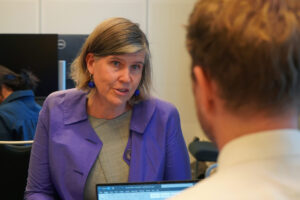
Bridging Borders: A Conversation with Meike van Ginneken
- Transboundary Water Cooperation
- Water cooperation
- Water and Peace
- Water diplomacy
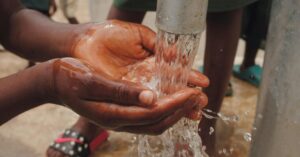
Transforming relations through WASH access
- Water, Sanitation and Hygiene (WASH)
- Water and Peace
- Resilience through water
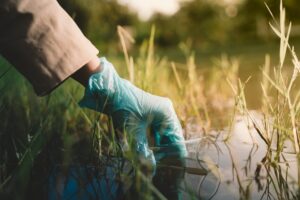
How can we make the manufacturing of antibiotics safer?
- Health and water
- Pharmaceuticals and water
- Wastewater
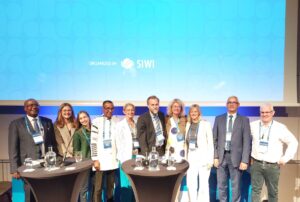
Reflections from World Water Week 2024: Unlocking Water Cooperation Solutions
- Human rights and water
- Indigenous knowledge
- Transboundary Water Cooperation
- World Water Week
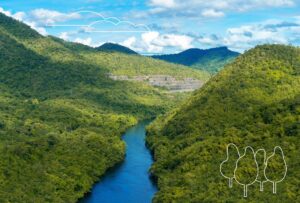
Water in landscapes: Co-creating climate resilience

The essential drop to reach Net-Zero: 10 minutes with Dr. Malin Lundberg Ingemarsson
